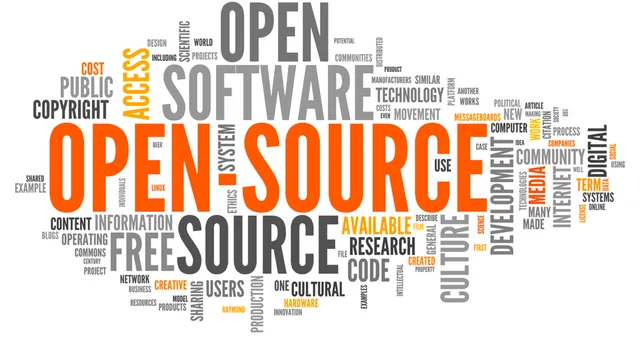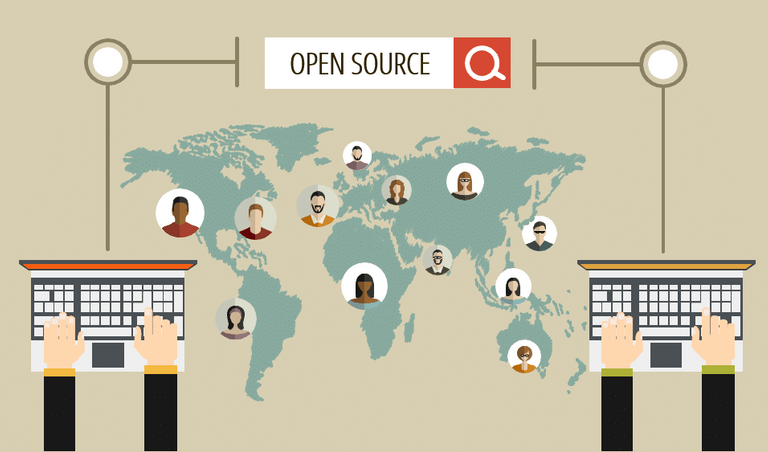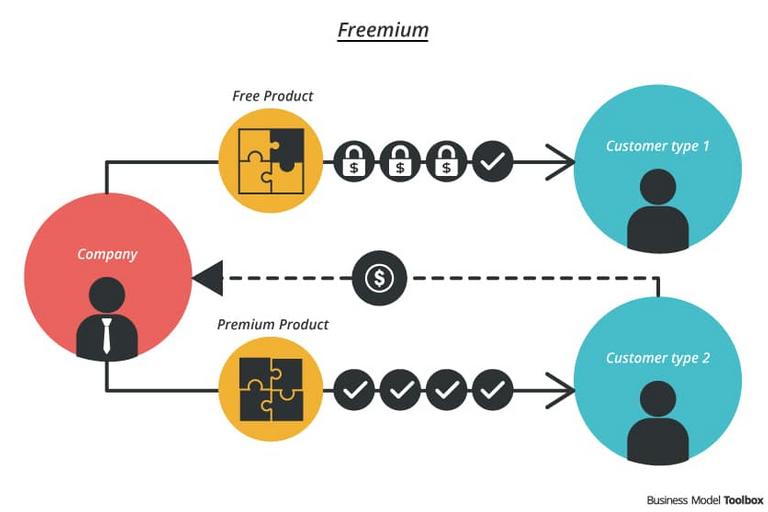Eye on Study - How Open Source Software Invaded The World?
Things have evolved and we have seen growing excitement in this area: IBM acquires Red Hat for $ 32 billion 3 times the market cap in 2014 and MuleSoft was purchased after its launch for $ 6.5 billion and now the value of “MongoDB” is about four billion dollars and the company's emergency public offering is estimated Flexion with $ 6 billion and through the merger of Cloudera and Hortonworks, a new company with a market cap of $ 4 billion will emerge.
In addition, there is a growing group of brilliant OSS “Open Source software” companies making their way like Confluent, HashiCorp, DataBricks, Kong, Cockroach Labs and many other companies, and given the relative complications that Wall Street shows it seems clear that something special is happening .
From open source to open core models to software as a SaaS service
In fact, open source software was not companies but rather revolts against the unfair profits that closed source software companies were reaping. Microsoft, Oracle, SAP, and others were hiring a monopoly "rent" for programs that their first developers didn't think were world-class.
So starting with the components most widely used in operating systems and databases, progressive developers and editors often collaborated asynchronously to compose large portions of programs and not everyone was able to see the program in the open only but through a coherent management model they added and improved their software .
The program was originally created for developers which means that at the beginning it was not more easy for the average user but it was strong, robust and flexible. These features became gradually spread across the world of software and for a decade Linux became the second most popular operating system for servers next to the Windows operating system and it has reversed MySQL is a feat by Oracle's dominance of the software.
The first entrepreneurial ventures tried to take advantage of this adoption by offering “enterprise-level” support subscriptions to these software distributions and here Red Hat winner of Linux and MySQL appeared in the database field and this business had some obvious limitations, it was difficult to convert programs to Support services only but the operating system and database market size was very large.
The successful adoption of Linux and MySQL has laid the foundation for the second generation of open source companies and the leaders of this generation were Cloudera and Hortonworks and these open source projects and projects were fundamentally different from the first generation in two dimensions:
First:
The program was developed primarily within an existing company and not through a broad and unaffiliated community.
Second:
These commercial activities were based on the model that was licensed only for parts of the program in the project for free so that they could impose fees on customers for the use of some programs under a commercial license and the commercial aspects were designed specifically for the use of institutions and thus easy to achieve income and then these companies have The ability to obtain more revenue even if its product market is not in great demand such as operating systems and databases.
Cons of this second generation open source business model:
- No company has uniquely “moral authority” over the program and thus competitors for the profits by offering increased portions of their programs for free.
- Often these companies divided the development of the program in an attempt to distinguish between them and to make things more difficult these companies were not created with the cloud service in mind, so cloud service providers were able to use open source software to create SaaS business from the same software base and is the EMR that a company uses Amazon is a great example of this.
The latest development came when business developers realized the challenges of the business model present in the first two generations - first and second generation - from open source companies and developed projects with two important components:
The first is that open source software has now largely evolved within the boundaries of business and often more than 90% of the code in these projects is written by the employees of the company that marketed the program.
Second: These companies offer their own programs as a cloud service from a very early age and in a certain sense, these are mixed business Open Core / Cloud Service that have multiple paths to monetizing their products.
The role of the open source community
While these 3G products are subject to strict control by host companies, the open source community still plays a pivotal role in creating and developing open source projects as the community continues to discover the most innovative and related projects and group projects on platforms such as GitHub and software download. In order to try it out and encourage what they consider to be the best project so that others can benefit from the wonderful programs, and this is very similar to how a good blog or a tweet is spread virally. For those programs.
The community also ends up being a 'Product Manager' for these projects, asking for improvements and pointing to deficiencies in the program and highlighting feature requests not found in the product requirements document like what we find on GitHub through chat threads and if there is an open source project that spreads among the community it will automatically form itself To the features and capabilities that developers want.
The community also serves as the Quality Assurance section for open source software by identifying errors and flaws in the program and testing initial releases giving companies feedback while also rewarding the forum for great programs through positive comments that encourage their wider use.
Open source transformation of freemium strategy
One of the last aspects of the changing open source business that is important in detail is the gradual movement from the real open source to the free society supported by the society, and as we mentioned above, the initial open source projects have helped the community as major contributors to the software base, in addition even for the minor elements Of the commercially licensed programs there was a significant retreat from the community.
These days, the local community and customer base are more familiar with the open source business model and there is appreciation for the fact that open source companies deserve to have a “firewall” so that they can continue to build and innovate.
In fact, from the customer’s point of view, the valuable proposals represent two open source programs:
Treat it as freemium
The concept of freemium is that you can use it primarily for free until it is published in the production stage or to some degree, companies like Elastic and Cockroach have gone so far as to open up all of their software sources but with a commercial license applied to parts of the software base.
The rationale is that real enterprise customers will pay whether the program is open or closed and are more motivated to use commercial software if they can read the code, in fact there is a risk that someone can read and slightly modify the code but in advanced economies where there are a lot of programs However, companies are unlikely to select counterfeit programs as a resource.
The future of companies and open source software
Microsoft is a tech giant and has a bad history with open source software, but lately it has been making great strides in saving its relationship with previously shattered communities.
Almost five years ago, there was only one model for these companies - Red Hat - and today we see a group of open source companies rise strongly which is very exciting, these companies that are worth billions are a testament to the strength of the model and what is clear is that the open source It is no longer a fringe approach to software and when top companies around the world are polled, few intend their core software systems to be open source.
And if open source companies fall within the list of top 5000 technical companies, this would tell us that we are witnessing the emergence of a completely new view of software companies with the leaders of this new group, which is worth tens of billions of dollars, and it is clear that this day is not tomorrow, but these companies need open The source to growth, maturity, product development and regulation in the next decade, but open source control over the future of software is undeniable.





